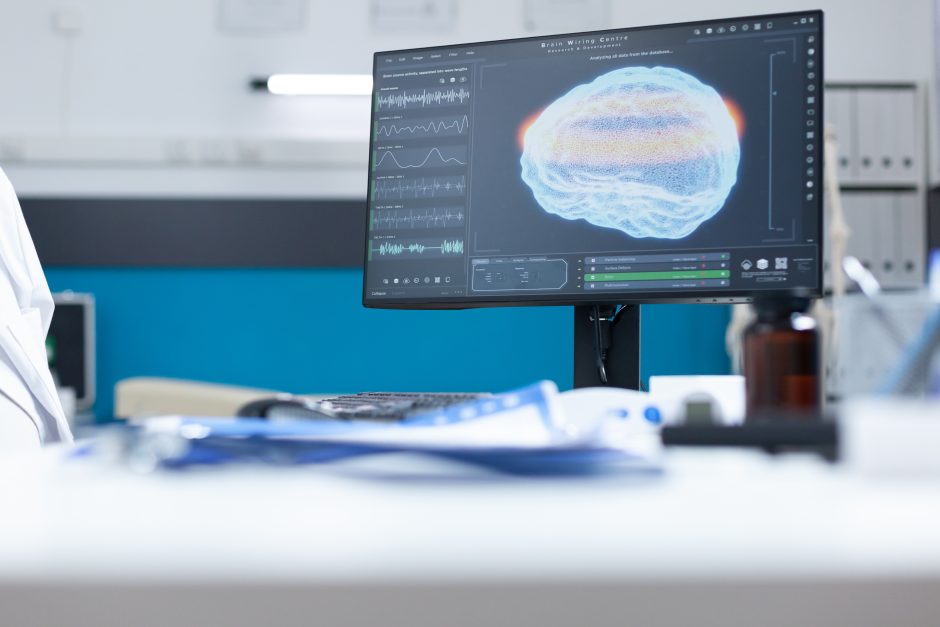
Radiology is an intriguing and rapidly evolving field within the medical industry, drawing students who are passionate about both healthcare and technology. As the backbone of diagnostic medicine, radiology plays a critical role in patient care, allowing for non-invasive insight into the human body. From X-rays to MRI scans, radiologic technology is at the forefront of medical innovation. This unique blend of patient interaction, technical proficiency, and scientific exploration makes a radiology major an appealing choice for many students. But what exactly drives students to pursue this specialized path, and what does it take to get into a reputable radiology program?
The Appeal of a Radiology Major
Students are often drawn to a radiology major because it offers a dynamic, high-impact career in healthcare without necessarily requiring the extensive schooling associated with becoming a doctor. Unlike some other medical fields, radiology strikes a balance between patient care and technology, providing a hands-on role in diagnosing and treating illnesses.
The path to a radiology career can be challenging, however, which sometimes leads students to seek assistance with their academic responsibilities. For instance, during demanding nursing or health science courses, students might think, “I need best nursing paper writing service,” as they juggle their busy schedules. This support can be crucial for maintaining focus on their primary goal—entering the radiology field.
Key Reasons Students Choose Radiology
Those with a keen interest in medical imaging and cutting-edge technologies find the field particularly rewarding. Additionally, the demand for radiologic technologists and radiologists continues to grow, promising ample job opportunities and career stability. But there are 4 distinct reasons students want to pursue radiology.
- Technological advancements: Radiology is synonymous with medical innovation. Advances in imaging technologies, such as 3D mammography, functional MRI (fMRI), and PET-CT scans, not only enhance patient care but also attract students who are passionate about technology and its applications in healthcare.
- Patient care involvement: Although radiology involves substantial use of technology, it also offers opportunities for direct patient interaction. Students who pursue a radiology major appreciate the role they play in patient care, from preparing patients for scans to providing them with crucial health information.
- Career diversity: Radiology is not a one-size-fits-all field. It offers various specializations, including diagnostic radiography, interventional radiology, and radiation therapy, providing students with diverse career paths to explore based on their interests and strengths.
- High earning potential: A career in radiology is known for its competitive salary and job security. Many students are motivated by the prospect of a financially rewarding career that also allows them to make a significant impact in healthcare.
How to Get Into a Radiology Program
Getting into a reputable radiology program requires dedication, academic excellence, and a clear understanding of the field. Whether you are aiming for a radiologic technologist certification or a more advanced radiology degree, the following steps will help you navigate the admission process.
Build a Strong Academic Foundation
Radiology programs, especially those at the bachelor’s and master’s levels, are academically demanding. Prospective students should focus on excelling in high school science courses, particularly in biology, chemistry, physics, and mathematics. A strong academic background in these subjects demonstrates the analytical and technical skills required for success in a radiology program.
In college, students should consider taking relevant courses, such as anatomy, physiology, and medical imaging. Participating in health sciences clubs or internships can also provide valuable hands-on experience.
Research Radiology Programs Thoroughly
Not all radiology programs are created equal. Some focus on radiologic technology certifications, while others offer comprehensive degree programs in radiology or medical imaging. When researching programs, consider factors such as program accreditation, faculty expertise, available specializations, and clinical training opportunities. Accreditation by relevant bodies, such as the Joint Review Committee on Education in Radiologic Technology (JRCERT), is crucial for ensuring the program meets industry standards.
Many students aim for programs that provide extensive clinical experience since hands-on learning is vital for building technical proficiency. Additionally, some programs offer pathways for advancing into specialized fields like MRI technology, sonography, or nuclear medicine. By choosing a program that aligns with their career goals, students can better position themselves for success.
Gain Clinical Experience
Gaining practical experience in a healthcare setting is invaluable for aspiring radiologists and radiologic technologists. Volunteering at hospitals, clinics, or imaging centers can provide insight into the daily responsibilities of radiology professionals and help build essential patient care skills. This experience not only enhances your application but also gives you a clearer understanding of what to expect in the field.
During these experiences, you will learn to work with patients, operate imaging equipment, and collaborate with healthcare teams. This exposure can also help refine your interest in specific areas of radiology, whether it’s diagnostic imaging, interventional procedures, or radiotherapy.
Develop Essential Soft Skills
While technical expertise is vital in radiology, soft skills are equally important. Radiology professionals must possess excellent communication skills to interact with patients, explain procedures, and work effectively within a healthcare team. They must also have a keen eye for detail, as interpreting medical images requires precision and accuracy.
Prospective students should actively work on building these skills through coursework, extracurricular activities, and clinical experiences. Developing strong problem-solving abilities and the capacity to work under pressure will further enhance your qualifications for a radiology program.
Conclusion
Choosing a radiology major offers a pathway to a dynamic and rewarding career that combines medical knowledge with cutting-edge technology. Students are attracted to the field not only for its high-impact role in patient care but also for its diverse specializations and promising job prospects. However, gaining admission into a reputable radiology program requires careful planning, academic excellence, and a commitment to building both technical and soft skills.
By focusing on a strong academic foundation, gaining practical experience, and thoroughly researching potential programs, students can position themselves for success in this competitive field. Along the way, they may encounter challenges, but with dedication and the right preparation, they can embark on a fulfilling career in radiology.
Stay updated, free articles. Join our Telegram channel

Full access? Get Clinical Tree







